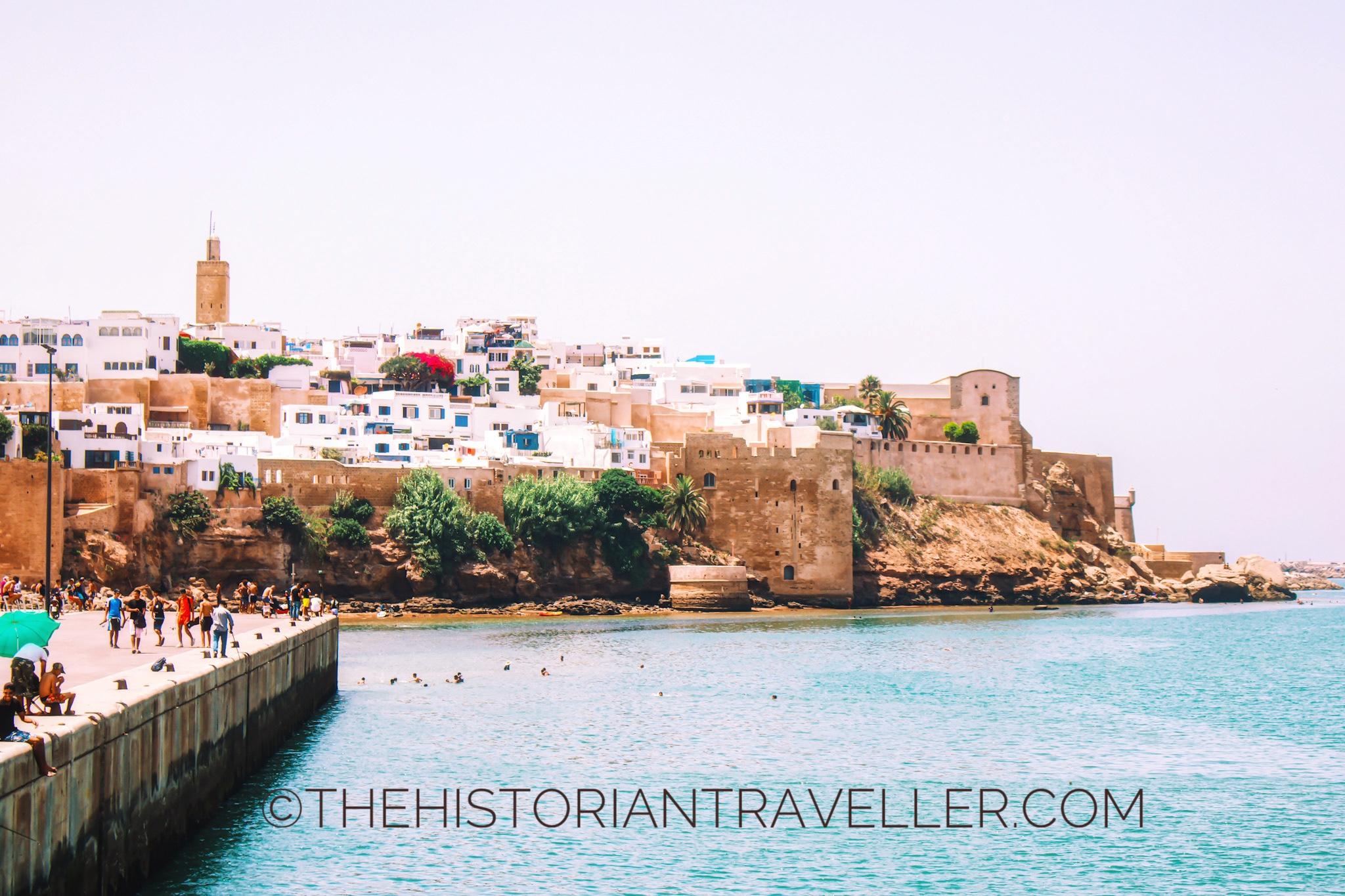Planning Sustainable Itineraries: How Travel Duration Affects the Ecological Footprint

The Responsible Traveler’s Mindset
Traveling has evolved far beyond a simple pastime; it is now a gateway to discover diverse cultures, breathtaking landscapes, and unforgettable experiences. However, with each journey, we bear a responsibility to the planet. The way we travel influences our ecological footprint, highlighting the importance of understanding how travel duration can impact the environment. By making conscious choices, travelers can reduce their environmental effects significantly.
Shorter Trips and Their Benefits
- Shorter Trips generally consume fewer resources. For instance, a quick weekend getaway by car often results in less fuel consumption than an international flight.
- In practice, choosing to explore nearby destinations, such as national parks or coastal towns, rather than flying across the country can drastically reduce carbon emissions. A trip to Yosemite National Park from San Francisco, for example, utilizes less energy than traveling to Europe.
Evaluating Transportation Options
- Transportation Options significantly impact travel ecology. Air travel, while convenient, tends to leave a substantial carbon footprint, primarily because of the fuel burned during flights.
- Alternatives such as trains or buses are often more sustainable. For example, Amtrak’s long-distance routes utilize less energy per passenger mile compared to flying, making it a greener option for travelers.
The Value of Local Engagement
- Local Engagement becomes crucial when considering sustainable travel. Longer stays in one area not only reduce the amount of transportation undertaken but also allow travelers to immerse themselves in local culture.
- This engagement can provide economic support to community businesses, enhancing their sustainability. For example, dining at family-owned restaurants rather than chains can help preserve local culinary traditions and reduce the overall carbon footprint of your meals.
Finding Balance in Our Travel Choices
A growing trend among American travelers is the pursuit of eco-friendly vacations, reflecting a desire to connect with nature while being stewards for its preservation. This dual desire presents a unique challenge: how can we enjoy our adventures and minimize environmental impact simultaneously?
Understanding the nuances of travel duration equips travelers to make informed decisions. By extending stays in a single location, the frequency of travel between destinations decreases, resulting in lower emissions. Moreover, longer trips allow tourists to engage more deeply with local practices and encourage sustainable tourism initiatives.
Looking Ahead
In the upcoming sections, we will delve into the multifaceted impact of travel duration on sustainability. Expect insightful case studies that illustrate successful environmental practices and expert advice to further equip travelers in their quest for eco-conscious adventures. By aligning our travels with responsible and sustainable practices, we not only minimize our ecological impact but also create a richer travel experience for ourselves and future generations.
DISCOVER MORE: Click here to unveil unique travel itineraries

Understanding the Impact of Travel Duration on Sustainability
As the world becomes increasingly aware of environmental issues, travel duration emerges as a vital factor in creating sustainable itineraries. The length of time spent at a destination can transform not only the travel experience but also its environmental impact significantly. As we begin to explore the complexities behind travel choices, it’s crucial to recognize how spending more time in one locale can foster sustainable practices.
Extended Stays and Reduced Emissions
One of the most apparent benefits of elongating a trip to a single destination is the significant reduction in carbon emissions. Frequent traveling, especially by air, contributes heavily to your overall ecological footprint. In fact, research has shown that air travel can produce over 200 grams of CO2 per passenger mile, whereas modes of transport like trains can reduce that figure dramatically to approximately 50 grams for the same distance. By choosing to stay longer at one location and utilizing less energy-intensive methods of transport, travelers can greatly mitigate their impact.
Experiential Depth Through Longer Visits
- Enhanced Cultural Engagement: Longer trips offer an opportunity to immerse oneself in local culture, traditions, and practices. By spending more time in a place, travelers gain insights that fleeting visits cannot provide.
- Supporting Local Economies: Engaging with local businesses during extended stays contributes to the area’s economic stability. For example, choosing local artisans, markets, and eateries helps strengthen community ties and fosters a sense of sustainability.
- Environmental Awareness: Spending additional days allows travelers to participate in local conservation efforts and learn about the region’s unique ecosystems, enhancing awareness of sustainability practices.
Moreover, extended vacations can facilitate deeper connections with nature. Rather than rushing through a list of attractions, a prolonged stay permits time for exploration of less-visited natural spots that may require a more significant commitment of time and energy, such as hiking in the Appalachian Mountains or kayaking through the mangroves of Florida. These experiences not only lessen the carbon footprint but also enrich the travel narrative, making it more impactful.
Strategizing Time vs. Distance in Itineraries
When planning itineraries, an essential strategy is to balance time spent with the distance traveled. Opting for regional explorations over long-haul flights can not only save time but also provide a deeper understanding of a specific area. For instance, a journey through California’s wine country can offer a diverse range of experiences while significantly cutting back on energy consumption compared to traveling across states or countries.
Embracing the philosophy of less is more aligns perfectly with sustainable travel practices. Instead of viewing travel duration as a limitation, it can be seen as an opportunity to forge memorable experiences that respect and nurture the planet. In the following sections of this article, we will further explore effective methods for making the most of our travel durations while safeguarding our environment. Prepare to gain valuable insights and tips that can transform your next adventure into a sustainable and rewarding experience.
Understanding Travel Duration and Ecological Impact
When it comes to planning sustainable itineraries, the duration of your journey plays a crucial role in determining your ecological footprint. The longer you travel, the more resources are consumed, significantly affecting the environment. By understanding how various travel durations impact sustainability, travelers can make informed decisions that align with eco-friendly practices.
Short trips often lead to higher environmental costs per distance traveled. For example, a frequent flyer taking multiple short-haul flights may produce more carbon emissions than someone taking a single long-haul trip. Conversely, extended travel allows for slower mobility methods such as trains or buses, which typically have a lower carbon footprint. This shift towards slow travel not only benefits the environment but also enhances cultural immersion.
Moreover, opting for longer durations in a single destination encourages sustainable spending in the local economy, promoting responsible tourism. Local businesses benefit more from travelers who stay longer, thereby fostering a community-centric approach that reduces the overall strain on resources.
As travelers, being conscious of our choices surrounding trip duration contributes significantly to protecting our planet. By aligning our travel habits with sustainability goals, we can explore the world while minimizing our ecological impact.
| Travel Duration Category | Advantages |
|---|---|
| Short Trips | Higher emissions per mile, often encouraging car or flight use. |
| Longer Stays | Reduces carbon footprint; promotes local economy and cultural experiences. |
DISCOVER MORE: Click here to uncover the exciting activities in iconic cities
Adapting Travel Duration to Nature and Community Needs
A sustainable travel approach not only requires a strategic view of travel duration but also involves adapting itineraries to meet the needs of local environments and communities. Conscious travel creates an alignment between the visitor’s interests and the community’s resources, which can significantly reduce negative environmental impacts.
Choosing Off-Peak Times
One of the most critical considerations in planning sustainable itineraries is selecting the right timing for your visit. Traveling during off-peak seasons drastically minimizes the strain on local ecosystems. Popular destinations such as national parks—which see millions of visitors each year—face challenges such as overcrowding, wildlife disturbances, and damage to natural habitats. By choosing to extend stays during less busy times, visitors will help distribute the flow of tourists more evenly, giving nature a chance to recuperate and communities to maintain their ecological balance.
Moreover, visiting during off-peak seasons often yields more affordable rates for accommodations and activities, incentivizing longer stays that benefit both travelers and local economies. For example, autumn trips to the national parks in the western United States can evoke stunning landscapes with fewer crowds, allowing guests to appreciate the natural beauty while simultaneously playing a part in the sustainability of the area.
Connecting with Local Conservation Initiatives
Longer stays also present unique opportunities to engage with local conservation efforts. Many regions actively seek volunteers to assist with environmental projects ranging from beach clean-ups to wildlife monitoring programs. For instance, the Florida Keys have organizations that offer volunteer opportunities to help restore coral reefs and protect marine life. By participating in these initiatives, tourists not only contribute positively to the local ecosystem, but they also gain firsthand experience and understanding of the challenges faced by the environment.
Additionally, these activities can be woven into itineraries, making travels more meaningful. This deeper connection allows travelers to appreciate their role in the preservation of destinations, which can enhance their commitment to sustainability in future travels.
Emphasizing Slow Travel
The slow travel movement encourages travelers to pause and savor their surroundings rather than rushing from one attraction to another. This concept, when applied to extended travel durations, means breaking down the typical frenetic pace of tourism into more enjoyable, immersive experiences. Instead of visiting five destinations in a week, consider focusing on one or two regions and exploring them in depth over a longer timeframe.
For example, a ten-day itinerary focusing on the picturesque coastal towns of Maine could include not only visits to iconic landmarks such as lighthouses but also opportunities to experience local cuisine, interact with artisans, and appreciate the less-traveled hiking trails. These practices lead to a smaller carbon footprint as travelers rely more on walking, biking, or local transport methods, experienced at a leisurely pace that respects both the natural environment and local communities.
As we explore further into sustainable travel planning, it’s essential to highlight the real benefits of intentionally extended visits. A deeper, more thoughtful approach to travel duration unveils not only the natural allure of destinations but also the significance of being a responsible visitor within them.
DISCOVER MORE: Click here to dive into culinary adventures
Conclusion: The Path to Responsible Travel
In conclusion, the concept of planning sustainable itineraries through thoughtful consideration of travel duration emerges as a critical component in mitigating our ecological footprint. By adopting practices such as traveling during off-peak seasons, engaging in local conservation initiatives, and embracing the slow travel movement, travelers can significantly contribute to the preservation of the natural world and the well-being of local communities.
As we become more aware of the impact that tourism can have on the environment, it’s imperative to recognize that every choice counts. Not only does extending travel duration lead to richer experiences and enhanced personal connections with destinations, but it also promotes a more sustainable tourism model that balances enjoyment with responsibility. For example, opting for fewer destinations allows for deeper explorations—transforming a typical vacation into a journey of discovery and reflection.
As the travel landscape continues to evolve, empowered travelers hold the key to shaping a responsible future. By committing to sustainable practices, we can create lasting positive change—not only for the incredible places we visit but also for the generations of travelers to come. As you plan your next adventure, consider how your choices can harmonize with the rhythms of nature and the heart of local cultures. Remember, in the realm of tourism, the journey is as important as the destination.


